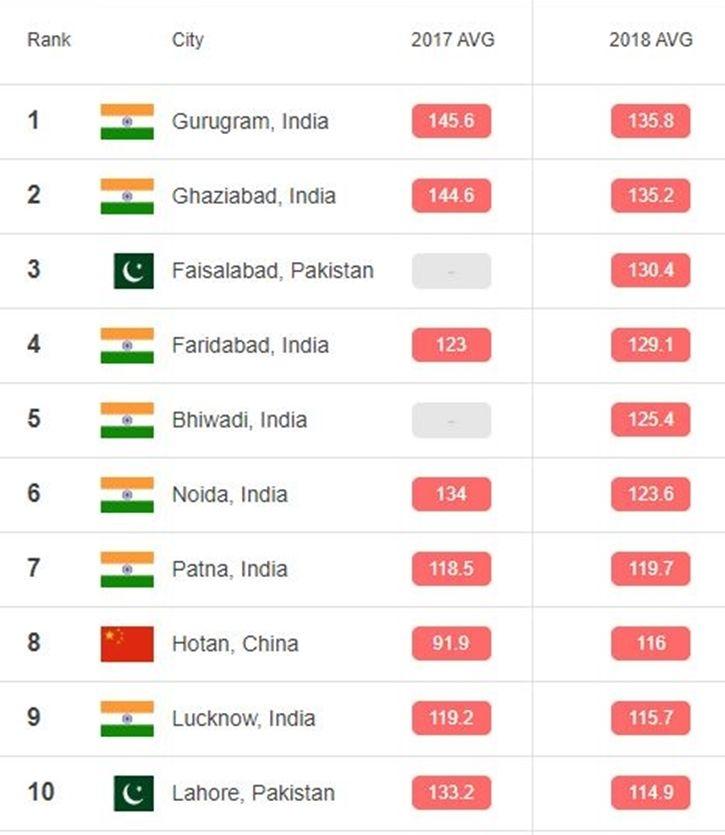Why in news?
‘IQAir AirVisual 2018 World Air Quality Report’ was recently published by NGO Greenpeace and IQ Air Visual.
What are the highlights?
- The report was a compilation of air quality data from public and private monitoring sources.
- It asserted that 7 of the world’s top 10 cities with the worst air quality in 2018 are in India.
- 15 of the 20 cities worldwide ranked the worst on air pollution metrics are in India.
- Gurugram, which borders Delhi, was identified as the city with the worst air quality in the world in 2018.
- It has an annual average concentration of pollutant PM 2.5 at 135.8 micrograms per cubic meter (ug/m3).
- It is however an improvement as compared to 145.6 ug/m3 in 2017 in Gurugram.
- Gurugram was followed by Ghaziabad at the second position with an annual average concentration of 135.2 ug/m3 in 2018.
- The position for number four was held by Faridabad, followed by Bhiwadi and Noida.
- Noida at position six on the list was succeeded by Patna followed by Lucknow with an annual average concentration of 115.7 ug/m3.
- Delhi continues to be extremely hazardous city to live in, with annual average fine particulate matter (PM2.5) of 113.5 ug/m3.
- Permissible limits - The National Ambient Air Quality Standards define the permissible limit for the concentration of PM 2.5 at 40 ug/m3.
- On the other hand, the World Health Organisation (WHO) defines the same at 10 ug/m3.

What do other insights show?
- The Ministry of Heavy Industries and Public Enterprises commissioned a study recently on the factors of pollution in Delhi.
- In Delhi, dusty sources such as roads, construction sites and bare soil add about 42% of the coarse particulate matter (PM10) in summer, and 31% in winter.
- Similarly, PM10 from transport varied between 15% and 18% across seasons.
- Vehicles contribute 18-23% of PM2.5 which is a more unhealthy particulate that penetrates the lungs.
- Biomass burning was estimated to make up 15-22% and dusty sources 34% of PM2.5 during summer.
- These insights provide a road map for action; the Delhi government has done well to decide on inducting 1,000 electric buses.
What are the shortfalls?
- Despite multiple reports putting air quality standards across India at ‘hazardous’ levels, little or nothing is being done either by the centre or the states.
- The monitoring of air quality in real time across cities and towns in India is far from adequate or uniform.
- The National Clean Air Programme was recently launched for 102 cities and towns, including the capital.
- It talks only of long-term benefits of air pollution mitigation programmes beyond 2024, and not a dramatic reduction in near-term pollution.
What should be done?
- An annual target for reduction has to be set to make governments accountable.
- Achieving this requires the political will to reform key sectors such as the transport, biomass and construction.
- A transition to electric vehicles for all commercial applications, with funding from the Centre’s programme for adoption of EVs should be a priority in cities.
- Cutting nitrogen and sulphur emissions from industrial processes needs a time-bound programme supervised by the Environment Ministry.
- It is crucial at this point to ensure that India’s future generations are not confined to cities which double up as gas chambers.

